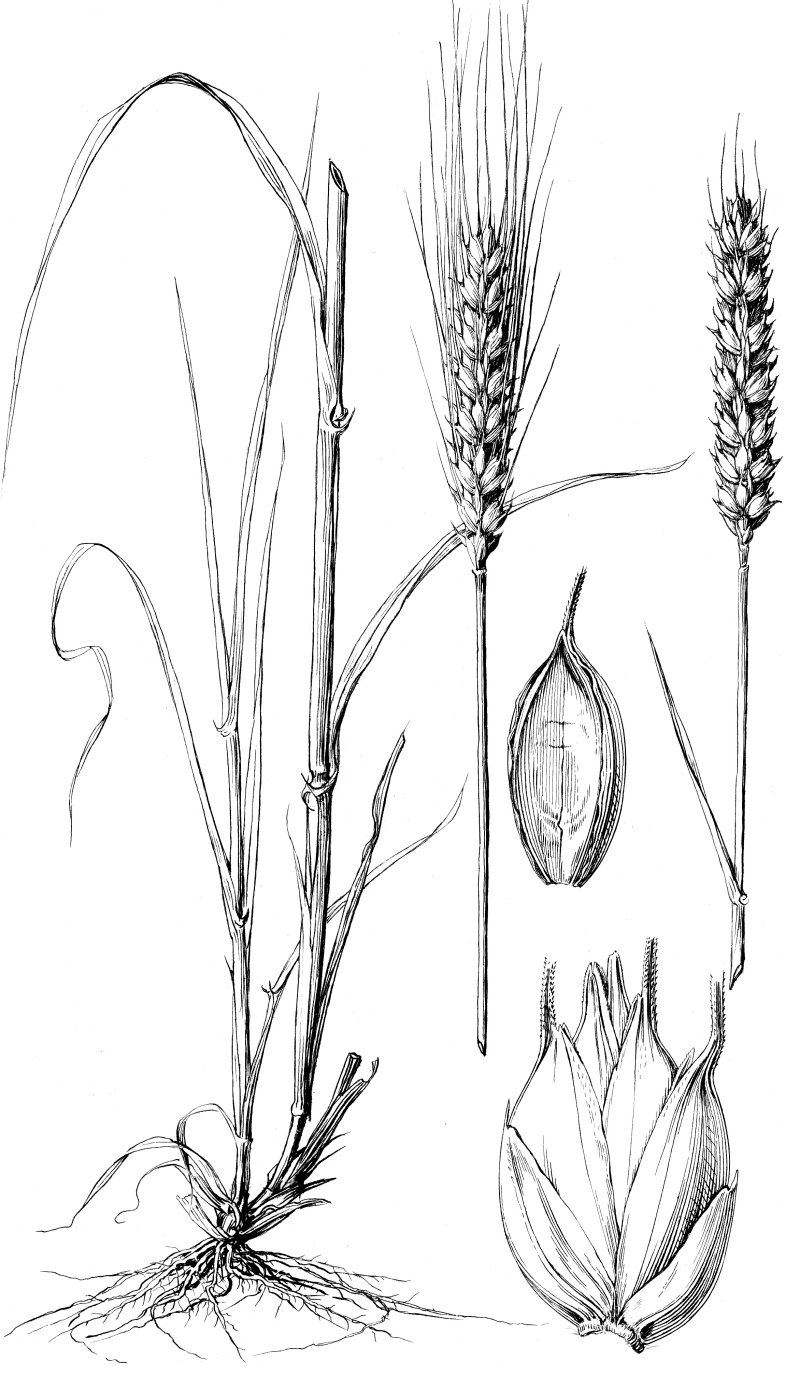
Triticum aestivum L. Wheat Habit: Annual or winter annual. Culms: About 60-100 cm. tall, erect, tufted, hollow, smooth or pubescent at the nodes. Blades: About 30 cm. long, more or less, 1-2 cm. wide, auricled at the base, at first rather light green, soft, ciliate. Sheaths: Smooth to slightly scabrous or pubescent. Ligule: Membranous, about 1 mm. long. Inflorescence: Spike 4-12 cm. long, dense, 4-angled, internodes of rachis 3-4 mm. long. Spikelets: 2-5-flowered, solitary and placed flatwise at each joint of the rachis, alternate, somewhat flattened, glabrous or pubescent, rachilla disarticulating above the glumes and between the florets. Glumes: Shorter than the spikelets, usually strongly keeled to one side, the outer side broader, rigid, often toothed, but seldom awned at the apex. Lemmas: Broad, keeled, very asymmetric, many-nerved, more or less 3-toothed, the middle tooth sometimes extended into a long awn (bearded wheats). Palea: Shorter than the lemma, 2-keeled. Fruit: Grain deeply furrowed, free, pubescent at the apex. Kansas Range: Throughout. Use: An important grain and for part of winter valuable pasturage. Synonyms: Triticum hybernum L. Triticum macha Dekap. & Menab. Triticum sativum Lam. Triticum sphaerococcum Percival Triticum vulgare Vill.